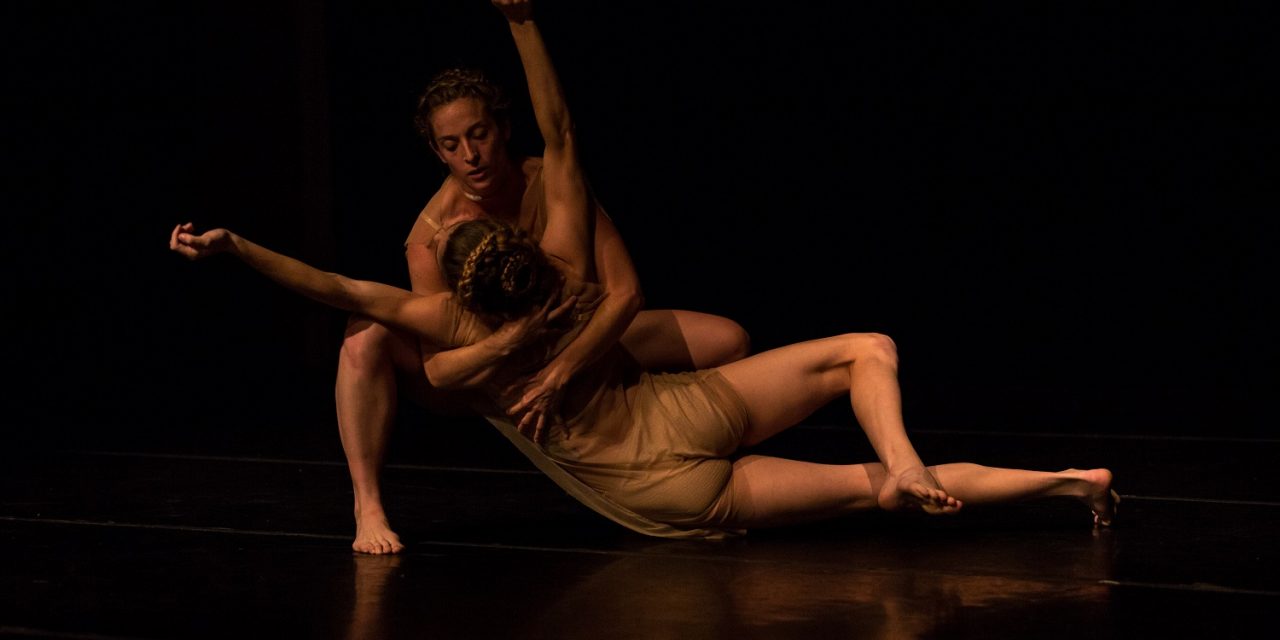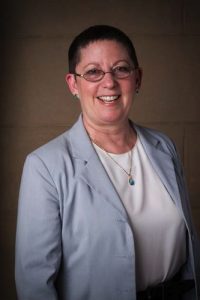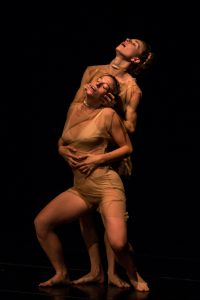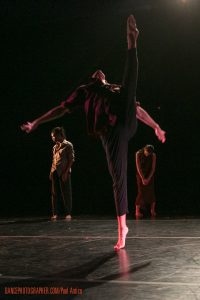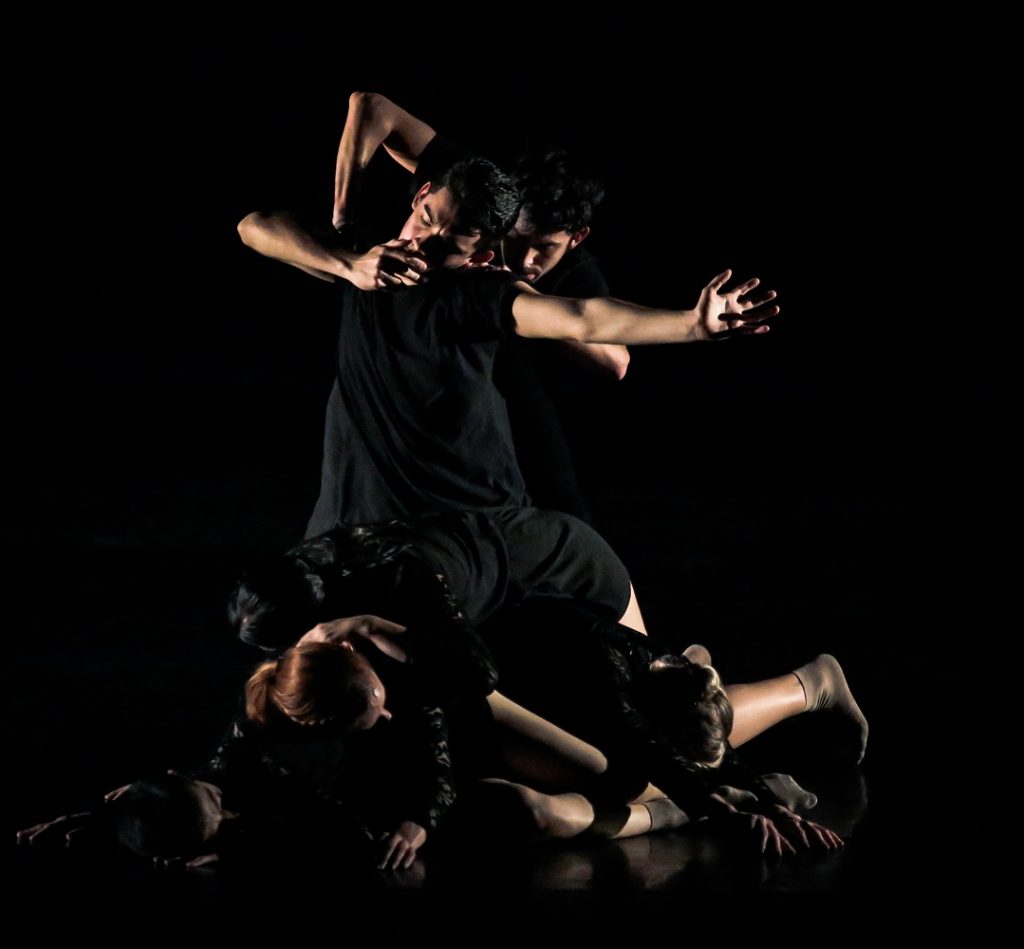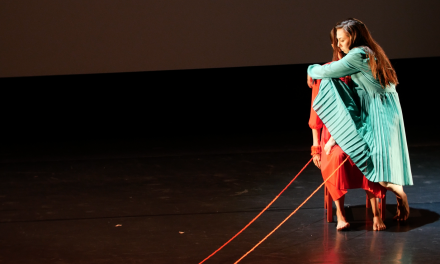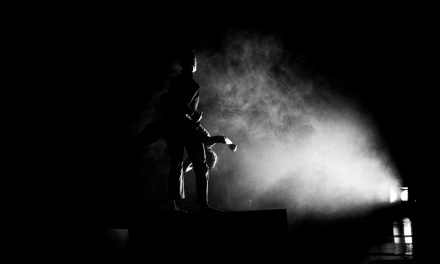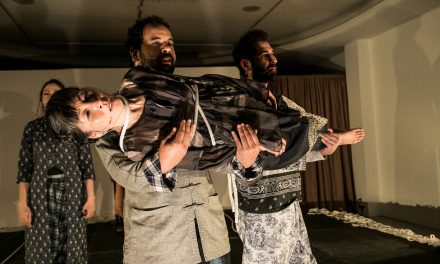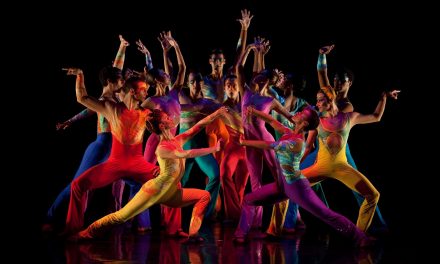On Saturday evening, I braved the LA rain and made my way to the Théâtre Raymond Kabbaz for the third and final installment of the 2018 Los Angeles Dance Festival’s Women Rising. Below ceiling panels painted to resemble clear cloudy skies, the audience settled into their seats as festival producers Pierre Leloup and Deborah Brockus introduced the show. Brockus, the legendary Artistic Director of BrockusRED, began with an homage to the women dancers and choreographers who have shaped Los Angles dance, naming Martha Graham and Isadora Duncan as two of the greats. After throwing in a quip about the art’s minimal funding, Brockus stepped off stage and the show began.
As with the prior two evenings, a Service To The Field award was given to “[honor] a leader who has changed the landscape of dance in Los Angeles.” The third recipient was Ann Haskins, a dance advocate who has spent her time connecting audiences to dance makers. Writing a regular column for the LA Weekly, Cultural Weekly, and LA Dance Chronicle, not to mention contributing to various dance magazines and radio shows, Haskins continues to be spirited in cultivating LA’s dance world—and, while Haskins was working away at the ballet and thus unavailable to accept it first-hand, her award is an ode to the importance of thriving journalism and ample art critique.
The first dance of the evening was szalt (dance co.)’s “new (excerpt from moon),” choreographed by Stephanie Zaletel and set to a recording of a live performance of an original score by Louis Lopez and Jonathan Snipes. A repeat from Thursday’s show, “new” is an 11-minute excerpt from an up-coming collaboration with Los Angeles Performance Practice (LAPP) which szalt says will explore themes of gravity, movement as meditation, stillness, body memory, and paradoxes of arrival. As is generally the case with excerpts, the work felt unfinished, though not unpolished or unrefined. The rhythm of the music created an atmosphere of suspense both throughout the actual excerpt and in anticipation for what could come after it; the piece’s ending—individual dancers walking by themselves across and then off the stage—presented a visual path of the piece’s trajectory, implying that there is indeed more to come and asking the audience, will you come with us?
While we’ll have to wait until August for the next segments of moon, LADF continued on with Sarah Elgart’s “Shape of Memory: Sam,” a solo performed by Sam McReynolds with an opening prelude by McReynolds and Danielle King. Like many Sarah Elgart/Arrogant Elbow works, the piece focused on a singular quotidian object: an incandescent light bulb. Following an entangled, almost primal, duet with King, McReynolds was left alone center stage. The music stopped, the lightbulb descended, and a duet of different sorts ensued. McReynolds danced with the light, circling around a golden glow that seemed to emanate his most intimate fears and desires. Visibly in control of erratic movements and complex floor work, McReynolds’ dancing was visceral and tender—and Elgart’s choreography functioned as the perfect apparatus for McReynolds to explore internal, arduous memories.
Quickly revamped to accommodate the weather, Brockus RED’s outdoor piece “Iunae Lumen” was performed indoors. Opening with a striking visual, the stage was first characterized by minimal movement and contrasting color. Two figures dressed in white held up a large, white sheet—on which was illuminated the silhouette of a third dancer, her shadow shifting with slinky, elongated movements—and two figures covered head-to-toe in red mesh cloths stood still on either side of the stage. As the dancer behind-the-curtain made her way in front of the sheet, a series of dynamic solos, duets, and group work ensued. Using clothing as props—for example, the two dancers used their red coverings as extensions of their body movements and one of the dancers’ skirt was pulled at, and ultimately refashioned, by the rest of the performers—the dancers and their choreography were passionate, powerful, and sensual. The original choreography suffered slightly from being contained in the theater, but the cohesiveness of the dance carried through and the piece remained compelling.
The night concluded with Kybele Dance Theater’s “Masal.” Choreographed by Founder and Artistic Director of Kybele, Seda Aybay, and made possible through a residency at Danceline LA, the piece began with six dancers splayed along the end of the stage, individually posing on and groping at the back wall. Aybay shone throughout the piece, using her breath as an intense extension of her physicality and grabbing at her mouth in a way that shook me to my core; and, her performance was matched by the rest of the cast. Junji Dezaki, Genevieve Zander, David Matthew Rodriguez, Samantha Jane Gray, and Alan L. Perez danced with each other in a coordinated fluidity that combined bodies in a series of fraught, existential crises. Marked by impressive technicality, the dancer’s jittery movements were steeped in emotional turmoil and a penetrating reflection of their selves.
Compared with the preceding pieces, Aybay’s choreography, sound design (musical arrangement by Aybay with music by Olafur Arnalds, Koreless, Sarah Neufeld, and Colin Stetson), and costume choices (identical white tattered shirts and tight shorts by Amabel Aguiluz) all worked together to present a differing take on womanhood. While the works of Zaletal and Brockus teeter on the edge of essentialism (for example, titular references to feminine lunar cycles and costume choices which signify womanhood via menstruation), Aybay’s existentialism lends itself to a particularly nuanced exploration of gender. Various translation sites tell me that the Turkish word “Masal” means “fable” or “fairy tale” or, simply, “tale” in English. Considering this translation through the lens of LADF’s theme points us to a burning ontological question that Aybay’s piece grapples with: how gender shapes our psyches and what that might mean for unique existences.
Led by “Masal,” the show was, all in all, a vibrant celebration of femininity in its various forms. The particular brand of feminism signified by the overarching title of the festival carries with it distinctly Hollywood undertones, with callbacks to 2017’s #MeToo movement and the post-election Women’s Marches. While such notions of collective womanhood are easily problematized, Aybay thankfully transcended this second-wave banality, working against a potentially exclusive emphasis on “female” choreographers to investigate intimate musings and represent contradictory contentions of self.
The LA Dance Festival continues at Brockus Project Studios with master classes from March 8th to 11th, college and youth showcases on the 16th and 17th, and a closing showcase and master classes on the 24th and 25th. For more information, click here.
ed note: the original release of this article neglected to credit the BrockusRed photo to Paul Antico, dancephotographer.com
Feature photo of szalt (dance co.) by Joseph Lambert.
To view the LA Dance Chronicle Calendar of Performances, click here.

